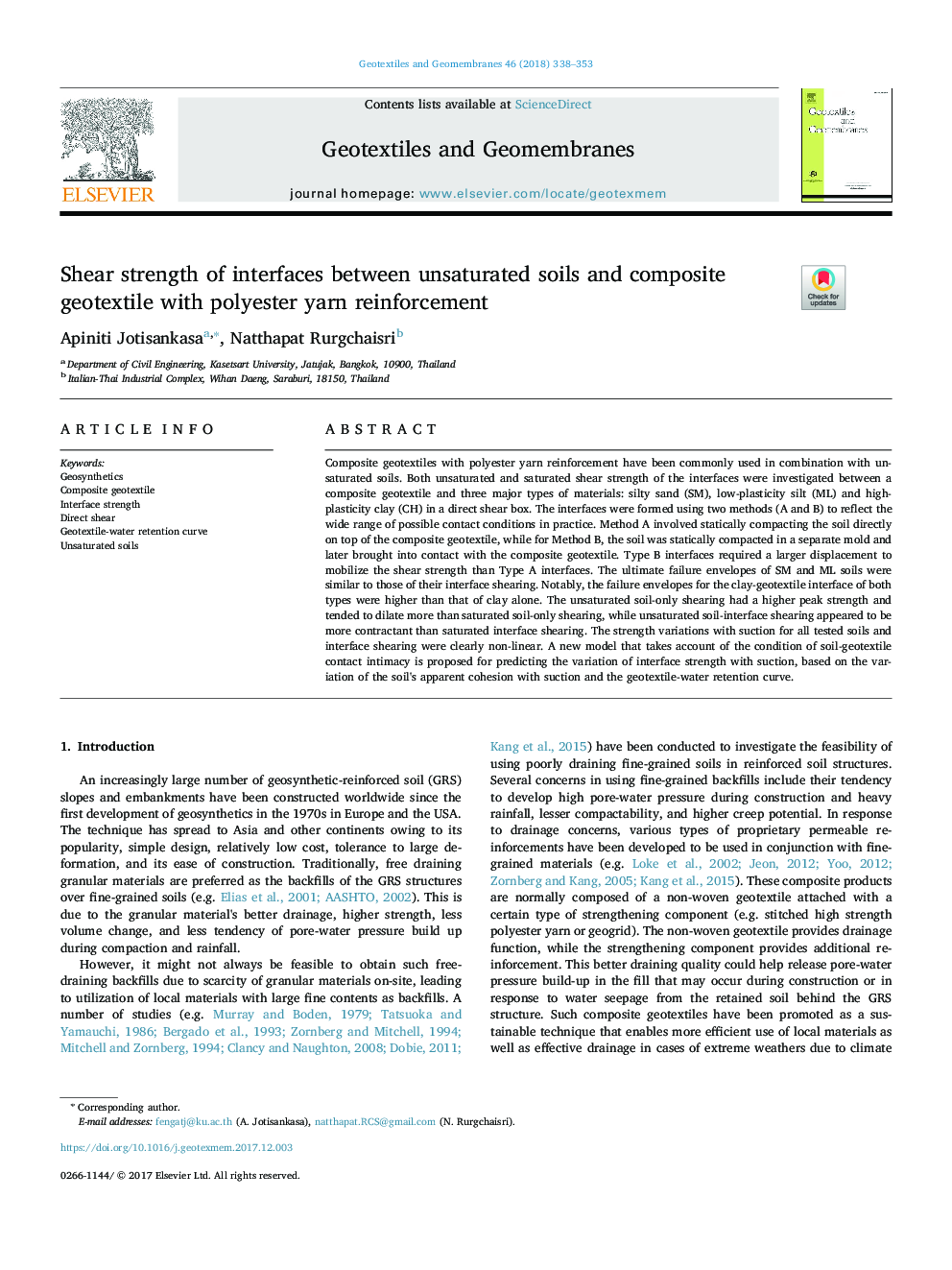| Article ID | Journal | Published Year | Pages | File Type |
|---|---|---|---|---|
| 6746927 | Geotextiles and Geomembranes | 2018 | 16 Pages |
Abstract
Composite geotextiles with polyester yarn reinforcement have been commonly used in combination with unsaturated soils. Both unsaturated and saturated shear strength of the interfaces were investigated between a composite geotextile and three major types of materials: silty sand (SM), low-plasticity silt (ML) and high-plasticity clay (CH) in a direct shear box. The interfaces were formed using two methods (A and B) to reflect the wide range of possible contact conditions in practice. Method A involved statically compacting the soil directly on top of the composite geotextile, while for Method B, the soil was statically compacted in a separate mold and later brought into contact with the composite geotextile. Type B interfaces required a larger displacement to mobilize the shear strength than Type A interfaces. The ultimate failure envelopes of SM and ML soils were similar to those of their interface shearing. Notably, the failure envelopes for the clay-geotextile interface of both types were higher than that of clay alone. The unsaturated soil-only shearing had a higher peak strength and tended to dilate more than saturated soil-only shearing, while unsaturated soil-interface shearing appeared to be more contractant than saturated interface shearing. The strength variations with suction for all tested soils and interface shearing were clearly non-linear. A new model that takes account of the condition of soil-geotextile contact intimacy is proposed for predicting the variation of interface strength with suction, based on the variation of the soil's apparent cohesion with suction and the geotextile-water retention curve.
Related Topics
Physical Sciences and Engineering
Earth and Planetary Sciences
Geotechnical Engineering and Engineering Geology
Authors
Apiniti Jotisankasa, Natthapat Rurgchaisri,
